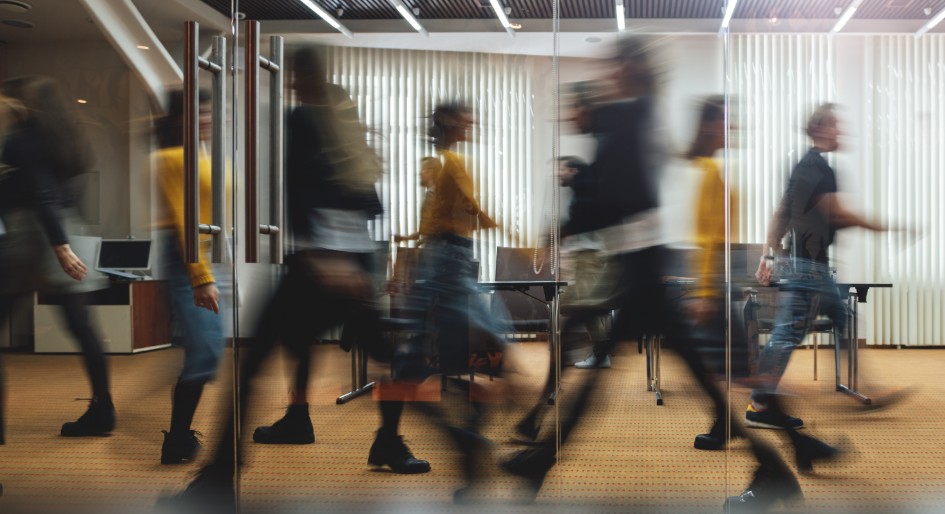As commercial designers shift their approach to what makes a great workspace, the focus on human connection and well-being has become paramount, laying the foundation for office trends that incorporate elements of residential and hospitality design and bring the natural world indoors.
Human connection
After spending time in homes alone or with close family, the longing for human interaction is a driving factor for many people coming back to the office, if even for a couple of days a week. Employees missed the company of work colleagues, perhaps because many of them had spent more time with colleagues than they did their own families during a “normal” work week.
Office space can help build, or rebuild, a sense of culture. It can create a gathering place where connection, collaboration and camaraderie thrive. Fostering human connection in the office is vital for promoting a positive work environment and enhancing the overall well-being of employees. And while technology will continue to be a cornerstone of communication and collaboration, technology is not a replacement for human connection.
If a space is designed well, it can play a huge role in encouraging human interaction. Office kitchen spaces are not only about food; they are also places for employees to talk with each other—to chat about work, family, sports or whatever else might come up over lunch.
Encouraging engagement among employees is critical. Providing spaces where colleagues gather for informal meetings fosters collaboration and enhances comfort. Residential-style furniture, cozy lounge areas and homey touches are being introduced to create a more relaxed and inviting atmosphere.
The demand for comfortable breakout or brainstorming areas is increasing. Providing spaces where employees can relax, collaborate, and gather their thoughts is essential in promoting creativity and productivity.
Comfort zone
Designing comfortable workspaces is essential in promoting employee well-being and enhancing productivity. When employees feel at ease in their work environment, they are more likely to be engaged and satisfied, creating a positive atmosphere. Many companies recognize the importance of prioritizing employee comfort as it contributes to a positive work culture, boosts productivity and aids in talent retention.
Designers should take a holistic approach to employee wellness by including ergonomic furniture, adjustable lighting and good air circulation/ventilation. These are all crucial elements in building comfort in the workplace.
Flexible workspaces are also important. Personalized workstations, designated quiet zones, and incorporating office acoustic pods create adaptability in office design. Research shows that happy employees not only drive sales and productivity but also contribute to organizational success.
Creating spaces that boost employee well-being, encourage social bonding and reduce stress is key. This can include incorporating residential design trends such as rugs and mixed flooring types to make the office space feel more comfortable and home-like. Dampening noise through the use of rugs, upholstery and acoustic walls is also important in creating a conducive work environment.
The aim is to blur the lines between work and home, inspiring users to feel and do something meaningful. Overall, designing comfortable workspaces is vital in promoting employee well-being and creating a positive work environment.
Inviting the outdoors inside
Many offices are introducing outdoor entertaining spaces that can double as creative gathering spots or break areas. Incorporating biophilic elements, such as skylights, enhances the appeal of the indoor office space and contributes to well-being. Prioritizing access to natural light and introducing plants can create a more inviting and refreshing environment.
In addition, using neutral colours makes smaller spaces feel more open and airy. Natural materials like wood, textural fabrics and earthy colours create warmth.
The inclusion of comfortable seating, flexible furniture layouts, and access to natural elements can create an inspiring and rejuvenating environment. Designing workspaces that bring the outdoors in through biophilic elements, natural materials, and comfortable breakout areas can create a harmonious and enjoyable work environment for employees.
The use of office space is changing to reflect what we’ve discovered is important to us—a workplace that provides comfort, instills wellness and increases productivity.
As Vice President of Commercial Design, Roby Isaac leads a team of talented designers who develop products across six flooring categories for Mannington Commercial.






